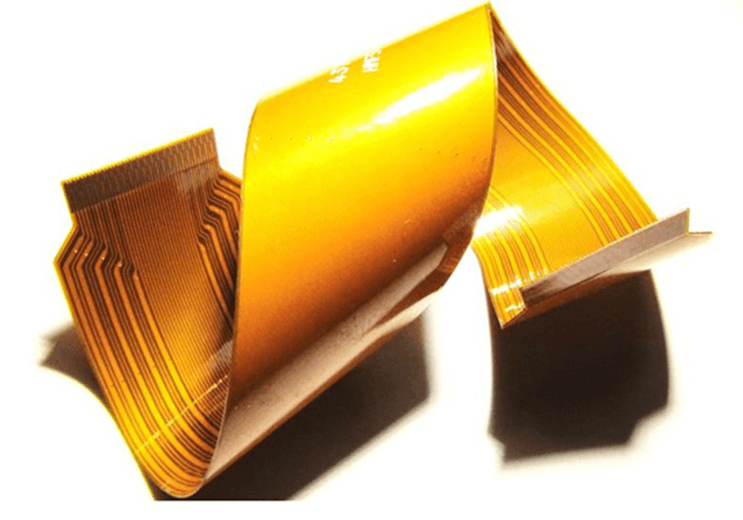
Designing a Flex PCB Prototype
Flexible circuit technology has a long and rich history, dating back to the 1950s. It is evident from patents released in the twentieth century that early academics anticipated fabricating thin, flat conductors sandwiched between layers of insulating material to build electrical circuits for Telephone Switching System Application (TSSA).
The market for flexible circuits has had consistent growth over the last decade, ranking among the fastest-growing of all interconnection product market segments. Another more modern variation on flexible circuit technology is "Flex PCB," commonly referred to as Flexible Circuit or bendable printed circuit boards.
Modern electronics manufacturers frequently deal with complex requirements when integrating circuits into a final product. The device must be lightweight and sturdy enough to withstand heat, vibrations, and other elements. This is where flexible circuit PCBs come in.
Understanding Flexible Circuit PCBs
As the name suggests, Flex PCBs are flexible circuits with fragile substrates, high bendability, and tensile strength levels. They are shaped into complicated three-dimensional structures for use in many applications, including heads-up displays for aerospace pilots, wearable technology, and microscopic devices (for example, current hearing aids) for medical care.
Flexible circuit boards (Flex PCBs) are the best for linking complex electronic internal systems. Unlike rigid circuits, flexible circuit are more suited for aerospace, medical, and consumer technology devices because they are more versatile and flexible than their rigid counterparts.
Flex PCBs have a similar set of advantages when it comes to manufacturing. They allow for more ventilation and heat dissipation than many other PCBs on the market.
Due to their wiring harnesses' minimal interconnections and components, their assembly costs are significantly cheaper than those of standard wiring harnesses. In addition, because the manufacturing process is standardized and streamlined, there is less overall susceptibility to assembling defects. There is no problematic manual input necessary for constructing many of these harnesses during the production process.
What Is Flexible Circuit PCBs Prototype?
If you're used to rigid printed circuit boards (PCBs), such as the FR4 board that's found on most industrial and commercial devices, a flex PCB prototype may seem strange. Flex or flexible PCB is a printed circuit board made of a plastic-like substance, most often polyimide, enveloping the circuit's conductive copper strips.
Flex circuits can be found in modern electronic devices, including keyboards, mobile phones, printers, smartwatches, and industrial applications.
Flex PCB prototype design demand has risen drastically with the recent trend of manufacturing compact devices. At first glance, the components installed on a flexible printed circuit board prototype seem weak, as if they may break under the slightest pressure. Despite this, the industry is experiencing increased demand for knowledgeable designers. There are a few reasons for companies to consider using flexible printed circuit boards in their products.
The flex circuit was designed to replace connectors installed on the PCB. Component costs can be lowered by replacing connectors, and the danger of faulty solder joints at the connector pins can also be reduced. It is also the best option for developing circuits that must fit into small goods such as smartwatches due to its flexibility.
Flex circuits outperform their rigid counterparts in many conditions because of the constant movements, vibration, and mechanical stress placed on the product.
How Does Flexible Circuit PCB Prototype Designing Process Work?
Since both techniques include creating a printed circuit board (PCB) from a printed circuit board design, the RFPCB prototype process and the actual Flex PCB production process are similar. Many distinct designs may be used instead of the production phase throughout the prototyping process.
Manufacturers may need to experiment with several different designs before settling on the final combination of mechanical and electrical powers. However, while the Flex PCB prototyping process might vary significantly from one project to the next depending on the manufacturing regulations, the following steps are often followed:
Design the first draught of the design: In this phase, the engineering team develops an initial design based on the specifications and needs provided by the customer. When clients provide detailed information about their system and goals, engineers can build an initial design that fulfills their requirements much more quickly.
Review of the design: After completing the basic design, the engineering team sends the original design to the PCB fabricator for assessment. One of the most significant components of this evaluation process is identifying all of the design's potential failure points, which include determining the areas which may cause it to fail throughout the manufacturing process or after the final product.
Follow-up with customers: After the approval, the engineering team presents it to the end customer. At this moment, they can address any issues or concerns that the consumer may have. However, addressing issues can add lead time to the project, so it is better and more cost-effective to make modifications during the prototyping stage.
Flexible Circuit PCB Prototype at HemeixinPCB
At HemeixinPCB, we provide you with robust flex PCB designs that are well-suited for your compact devices. As an additional service, we also provide scalable designs for manufacturability tests. When the time comes to go to the production stage, you won't have to worry about dealing with delays or costly blunders.
Moreover, with our on-demand services, you are not required to meet any minimum volume criteria. Provide us with a brief description of your requirements, and the highest-quality flex PCBs will be available to you in the requested timeframe.
So, what are you waiting for? Reach out to us today!
HemeixinPCB
Wanxia Industrial Park, Tongfuyu Industrial Area,
Shajing Town, Bao'an District, Shenzhen, China
+86-755-2758-6529
This email address is being protected from spambots. You need JavaScript enabled to view it.




